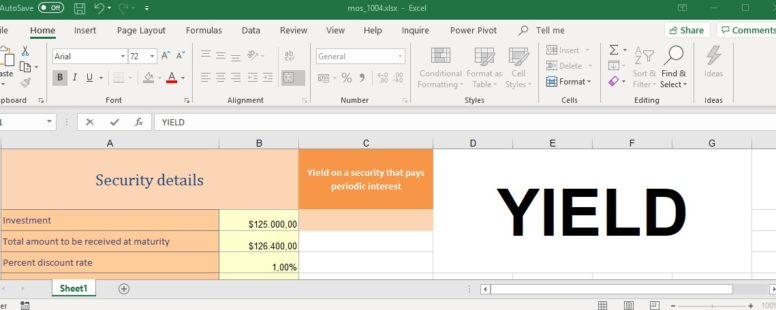It calculates the yield on a security that pays periodic interest.
The syntax of the function is the following:
YIELD(settlement, maturity, rate, pr, redemption, frequency, [basis])
settlement: The settlement date of the security (It is the date when the security is traded to the buyer and it always comes after the issue date).
maturity: The maturity date of the security.
rate: The annual coupon rate of the security
pr: The security’s price per $100 face value.
redemption: The redemption value per $100 face value of the security.
frequency: The number of coupon payments per year (annual=1, semiannual=2, quarterly=4).
[basis]: Optional. The type of day count basis (default is 0).
If the dates entered are not valid dates the function returns a #VALUE! error.
If rate or pr or redemption are less than or equal to zero the #NUM! error is returned.
If basis is not inside the valid values (between 0 and 4) the #NUM! error is returned.
If the settlement date is after the maturity date the #NUM! error is returned
Click on the button to practice using this function, with the help of our Online Assessment Tool:
Here is an example of how to use the YIELD function:
Use the proper function in the cell C2, to calculate the yield on a security that pays periodic interest. All the information you need is displayed in the current worksheet.
